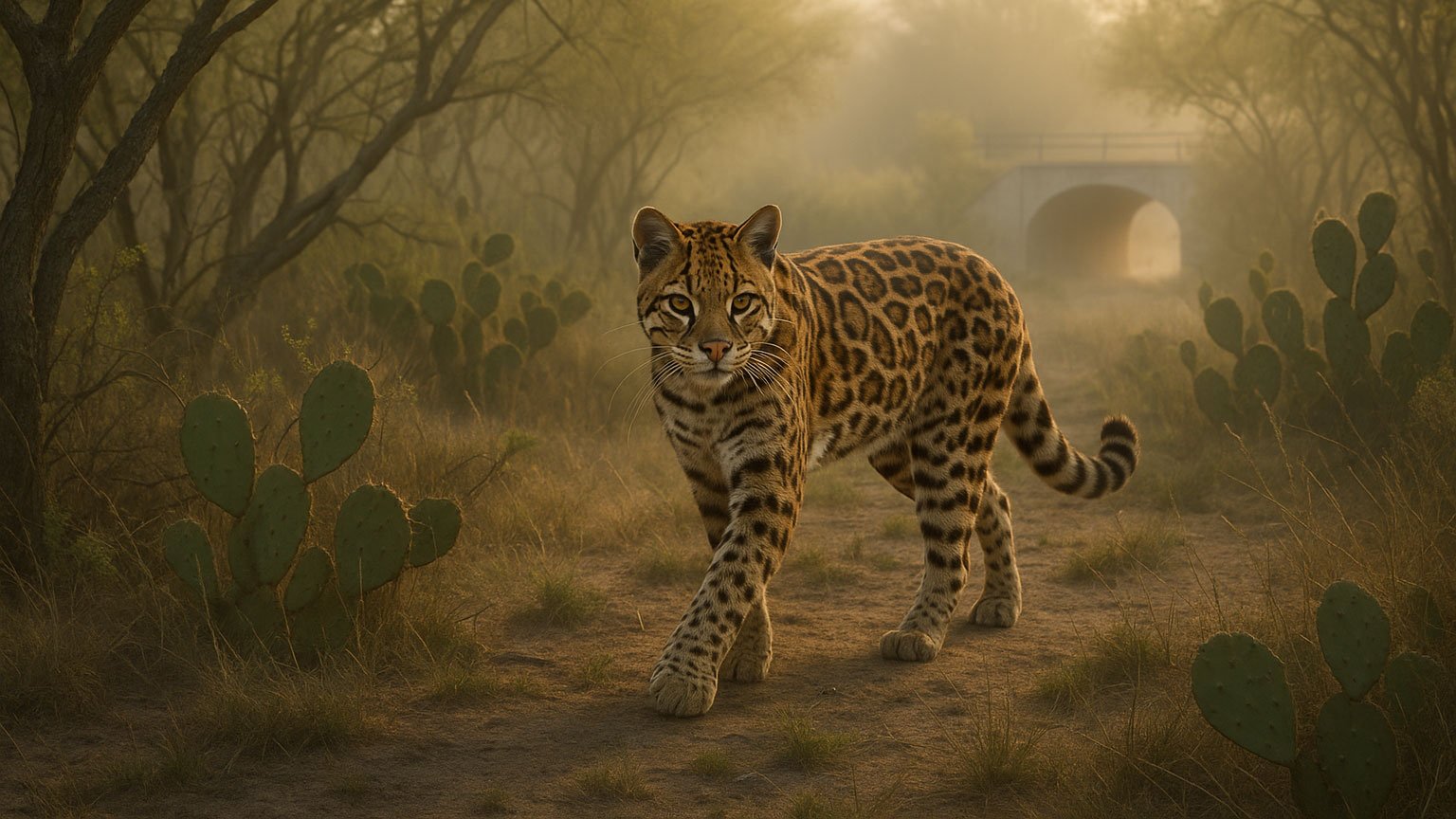The Unlikely Amazon Friendship of an Ocelot and an Opossum
Deep in the emerald heart of the Peruvian Amazon, where the night air hums with the songs of insects and the rustle of unseen creatures, an ocelot pads softly along a forest path. Her spotted coat blends seamlessly into the moon-dappled shadows. But what’s this? Just a few paces to her right, another set of paws moves in rhythm with hers — smaller, pink-tipped toes gripping the forest floor. An opossum, tail curling like a question mark, keeps perfect pace.
It looks almost like a scene from a storybook: predator and potential prey strolling side by side, as if sharing a secret no one else could understand. Yet this isn’t fiction.
Researchers at the Cocha Cashu Biological Station stumbled upon this odd partnership completely by accident. Their cameras had been set to study birds, but instead they captured something no one expected — an ocelot and a common opossum, walking together through the rainforest as though they were “two old friends walking home from a bar,” as behavioral ecologist Isabel Damas-Moreira described.
Over the next few years, similar sightings trickled in from different corners of the Peruvian Amazon — four in total, between 2019 and 2023. The encounters weren’t frantic chases or tense standoffs. They were calm, unhurried walks, the kind of easy companionship you see in those who have learned to trust one another.
Scientists suspect this relationship is no random fluke. Opossums, it seems, are drawn to ocelots — literally. In experiments, they actively sought out the scent of ocelots, even rubbing against fabric strips laced with their scent. One theory suggests the opossum uses the ocelot’s scent as camouflage, masking its own smell from other predators. Another proposes that the ocelot benefits from the opossum’s resilience to venom and possible knack for locating prey. Much like coyotes and badgers in North America, the two may be hunting partners — each lending skills the other lacks.
For ocelots, whose survival depends on stealth and opportunity, having a foraging ally could mean the difference between a good night’s meal and going hungry. For opossums, whose solitary lives usually put them at a disadvantage, tagging along with a well-armed feline might mean fewer threats and better scraps.
The discovery is a reminder of a truth too easily forgotten: nature is not a battlefield alone. It’s also a web of alliances, some fleeting, others long-lasting, many still invisible to human eyes.
In an age when forests are shrinking and human activity is slicing through ancient landscapes, moments like these feel like small miracles. The ocelot and the opossum don’t know they’ve become symbols of resilience and cooperation. They only know that tonight, for reasons of instinct or intuition, they walk together.
If we want such wonders to remain possible, the lesson is clear: protect the habitat, and you protect the stories. Support conservation organizations like Big Cat Rescue, which funds wildcat protection in their natural ranges. The next great discovery may be happening right now, under a canopy of leaves — but only if we let it.








